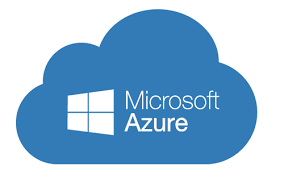
Microsoft Azure provides more than 200 services, are divided into 18 categories. These categories include computing, networking, storage, IoT, migration, mobile, analytics, containers, artificial intelligence, and other machine learning, integration, management tools, developer tools, security, databases, DevOps, media identity, and web services. Let’s take a look at some of the major Azure services by category:
Compute Services
This service enables you to create a virtual machine in Windows, Linux or any other configuration in seconds. Azure virtualized technology gives the speed, storage, and flexibility to have complex machines complete all tasks required. Because of the fluidity of the Azure subscription environment, almost anything physical can be recreated and upgraded on the fly with little to no downtime at all. It is the ultimate “must have” for business, government, education, or non-profit.
This service lets you create scalable applications within the cloud. Once the application is deployed, everything, including provisioning, load balancing, and health monitoring, is taken care of by Azure.
Service Fabric
With service fabric, the process of developing a microservice is immensely simplified. Microservice is an application that contains other bundled smaller applications.
With functions, you can create applications in any programming language. The best part about this service is that you need not worry about hardware requirements while developing applications because Microsoft Azure takes care of that. All you need to do is provide the code.
Enhance and Implement Backup and Disaster Recovery
Microsoft Azure is a backup and disaster recovery dream tool. Why? Because of its flexibility, advanced site recovery, and built-in integration.
As a cloud-based solution, Azure is innately flexible – coincidentally, it can back up your data in almost any language, on any OS, and from any location. Plus, you define the frequency and extent of your backup schedule (daily, weekly, monthly, etc.).
Backup Solutions
Tape backup has a time and place, but it has limited abilities as a stand-alone backup and disaster recovery solution. Azure site recovery can enhance your tape backup with offsite replication, minimal onsite maintenance, up to ninety-nine years of data retention, minimal or no capital investment, and minimal operational costs. Azure backup stores three copies of your data in three different locations in the data center, and then another three copies in a remote Azure data center, so you never have to worry about losing data.
If you’re in a Windows virtual environment, Azure’s built-in integration for additional backup will be a quick and painless solution. Azure site recovery integrates with System Center and HyperV architectures, creating a robust and seamless cohesion between Azure, System Center, and HyperV. Most importantly, Azure allows the scalability and security of virtual platforms
Azure Data Catalog
Firstly, Do you need data consumption in a range of tools, but there is no way of sharing data artifacts across them? Or are you spending more time looking for data than analyzing it? Then, Microsoft Azure Catalog is designed specifically for you to address such issues. Secondly, it is an enterprise-wide metadata catalogue built-in Azure to enable power users (like data scientists, producers or analysts) with the self-service discovery of data from all sources. Likewise, this makes the entire data asset discovery process quite simple and effortless. However, to enable Data Catalog, you should follow these five steps:
- Provisioning data catalog
- Register and annotate assets
- Discover assets
- Connect to the data
- Set-up security for data assets
Azure Virtualized Technology
The complex made easy by building virtual networks and everything from virtual servers to full virtual environments in Microsoft Azure. Above all, Store files and media in virtual spaces with unlimited storage including hot and cold access to these data points. Azure is the prime location for virtualization and Microsoft is a the helm. Azure products are infused with Microsoft Artificial Intelligence with Deep Leaning that allows applications and services to run autonomously and operate in real-time. For example, data points are no longer limited or accessible after processes are complete. Data points are now fluid with their access, reporting, integration, and scalability. However, with AI the analysis, manipulation, and creation of data for mass distribution including infusion of advanced logic gives Microsoft AI the edge.
Microsoft AI
Microsoft Azure powers Microsoft AI products and service line. This includes CoPilot, CoPilot Studio, Azure AI Foundry, and CoPilot + PCs, Microsoft AI not only comes with advancement, but multi-tiered security. Security which adapts, learns, and optimizes in real-time. While threats constantly change to gain access to data, Microsoft AI constantly adapts and does penetration testing to bring security levels to optimal levels. With business, personal, or integrated technologies, Microsoft AI provides the scalability thats required in today’s advancing society. CoPilot is now the integration data point for AI to increase productivity on all fronts. By accessing real-time calculations backed by data points that are solution driven, Microsoft AI gives the confidence required to transition, upgrade, secure, and produce solutions on a massive level. Other products in Azure which are AI infused include Azure OpenAI Service, Azure AI Search, Azure AI Content Safety, Phi Open Models, and Azure AI Model Catalogs.
Therefore, get access to the world’s leading Artificial Intelligence product through an Azure subscription. Click the link below to get your Azure subscription along with our guaranteed 30% off any azure subscription.
CLICK HERE: START AZURE TODAY
CALL (800)998-2792
